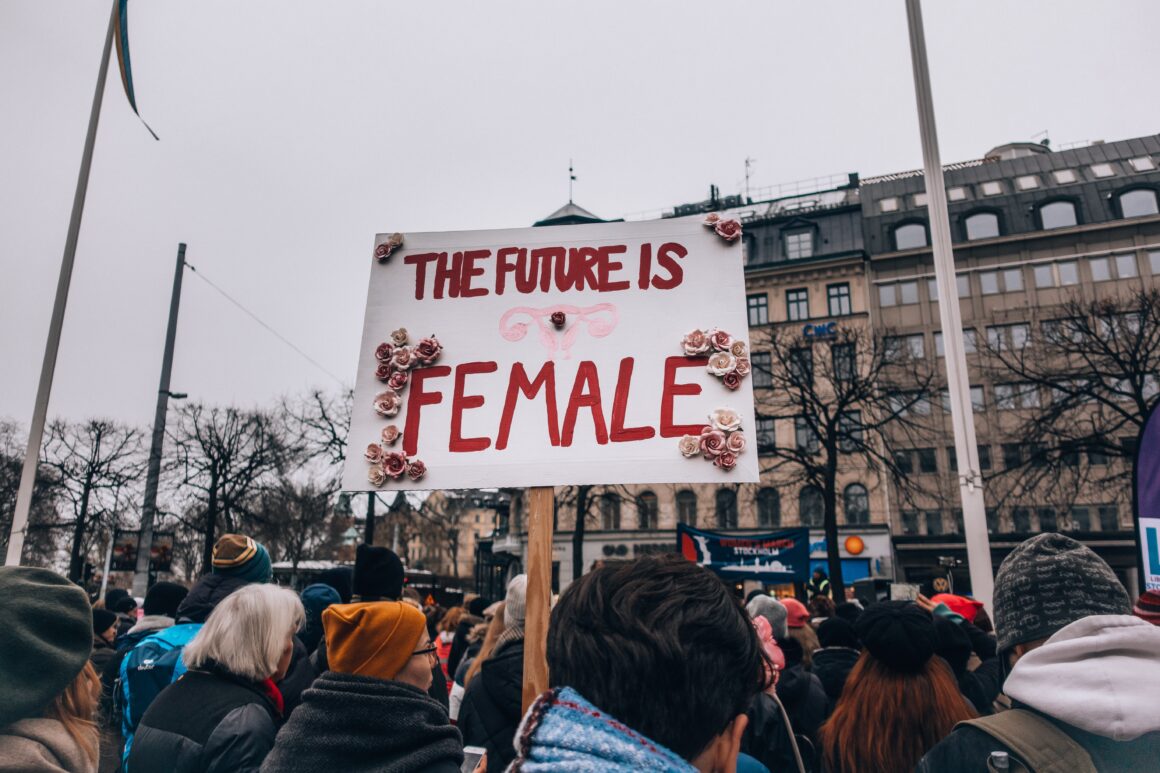These last couple of years, it’s been pretty hard to miss how the clothing industry has overflown with feminist statement tees. With slogans like “the future is female” and “girl power” being repeated on t-shirt after t-shirt, feminist messages have become one of the go-to prints on women’s clothing. The role of this phenomenon goes far beyond a normal fashion trend; its existence is an important part of a larger discussion since it reflects a cultural shift in terms of how feminism is viewed and talked about in popular culture. Exploring its layers is therefore complex and leads to a number of questions regarding the nature of feminist messaging today, particularly what is gained and lost when feminism is lifted into the mainstream and turned into a commodity.
From one perspective, the trend is a sign of progress; it’s clearly a product of the popularization of feminism and the normalization of female empowerment promotion. The apparel is an example of how young girls get to grow up in a society where the feminist label isn’t nearly as stigmatized as it used to; they’re part of a cultural shift where feminism has become cool. Consequently, the apparel contributes to further lifting feminism into the mainstream.
However, the way it lifts it into the mainstream also causes issues. When the feminist label is used solely because it’s trendy, the value it holds is reduced. The t-shirts are undeniably cotton candy activism; it does not take long to figure that most of them are void of much substance.
The mass production of empty buzzwords like “grl pwr” on clothes in the name of feminism does to some extent trivialize the ideology as if the challenges it faces are of much less worth, importance and complexity than they truly are.
In the process of becoming increasingly mainstream, parts of feminism have been watered down and this fashion trend is, in its essence, the epitome of that dilution. Victoria Morgan effectively described the issue in an article for College Magazine:
“People dilute feminism when they spit out overused phrases. It’s as though feigning a desire for equality has become the newest trend—a simple Google search can show you a host of girl-power paraphernalia marketed specifically to a “feminist” community. Emblazoning “f—ck the patriarchy” on t-shirts, buttons and coffee mugs turns a complex movement into a commodity to be purchased and worn as an accessory. I worry that in our haste to identify as feminists, and to make sure everyone around us knows, we miss the point of advocacy.”
That is what makes the phenomenon so interesting: it’s a window into the cost of the popularization of feminism versus the subtle values of pop feminism. While the increased support for feminism is something to be celebrated as a whole, it has also created attitudes where activism is more about identity than real actions, something that the apparel clearly demonstrates. The feminist statement tees often inspire consummation more than they inspire change. Therefore, the discussion around the apparel ultimately boils down to the question if pop feminism benefits our society despite its flaws.
Pop feminism doesn’t immediately cause people to take action, but it does, after all, inspire young people to engage more actively with social issues since it, to put it bluntly, makes feminism and social inequality pretty, damn hard to ignore. For this reason, it is rather unnuanced to completely dismiss the apparel, or pop feminism in general, as void of any value. In general, it’s also important to remember that it isn’t feminist to mock teenage girls for buying these clothes when discussing the downside of the apparel. Most people simply see it as a cool t-shirt, without putting much thought into it, which is fully normal.
Nevertheless, when discussing the fashion trend, it’s important to remember that the apparel isn’t created for the sake of the benefiting the movement or making a positive impact: it’s created to sell.
Many critics have pointed out that the t-shirts are deeply hypocritical and inappropriate considering that the companies that sell and produce them are significant sources of global inequality, both in terms of economy and gender.
Not only is inhumane working conditions and extremely low salaries the standard for many fashion chain producers, the overwhelming majority of workers affected by these problems are women since the garment industry is heavily dominated by females. Ironically, companies, therefore, exploit workers in order to produce clothing that arguably exploits the social justice movement.
So is the apparel a symbol of empowerment or exploitation, de-stigmatization or dilution? The answer is that it’s a combination of them all; it’s a multi-faceted issue that illustrates the conflicting interpretations of the role of feminist discourse and messaging in pop culture today. Its deep connection to that discussion makes it an important subject of reflection and a reminder that we should continue to question feminism’s current development and exploitability. Above all, the t-shirts are a warning sign that we shouldn’t lose sight of the value, purpose and complexity of the feminist movement, in the midst of promoting it.
Photo: Unsplash


